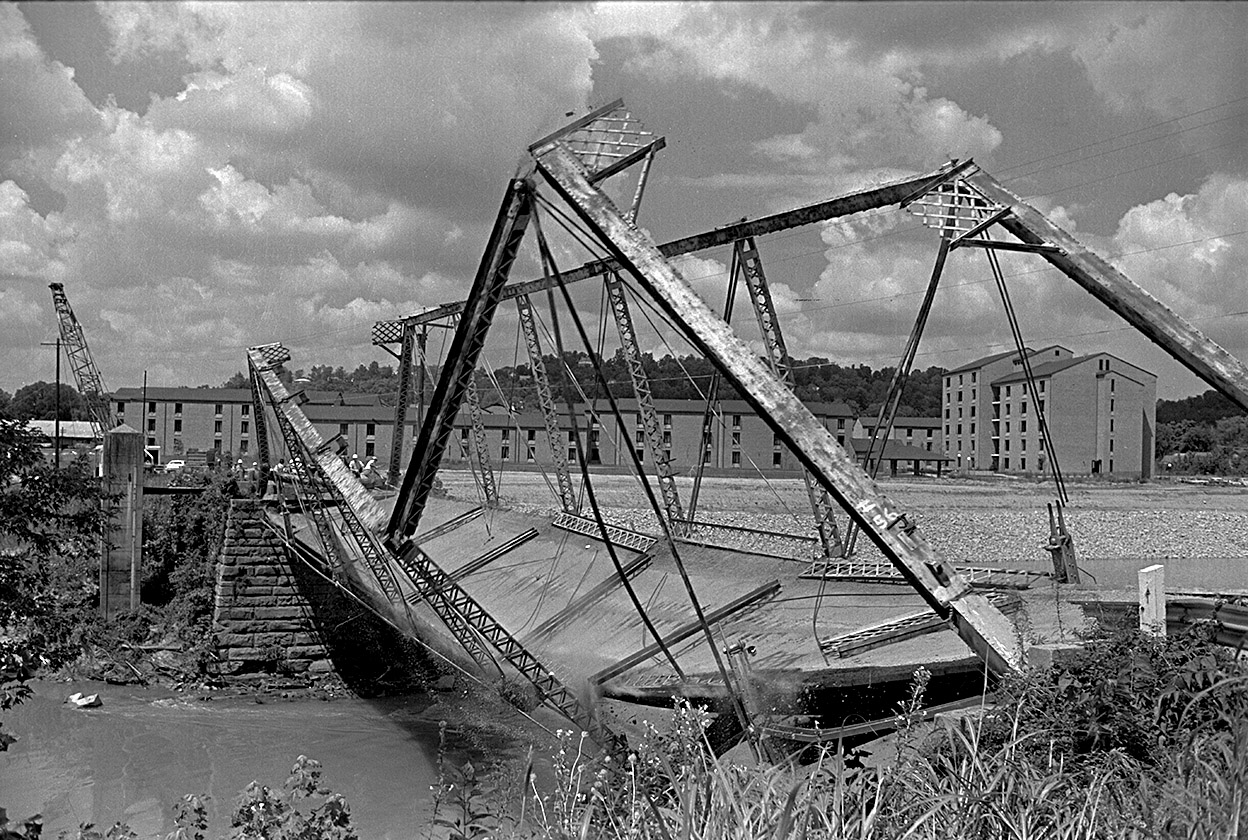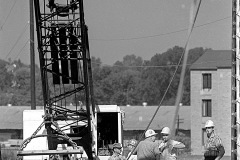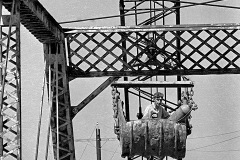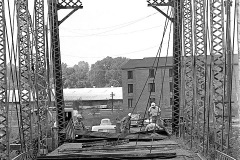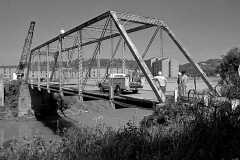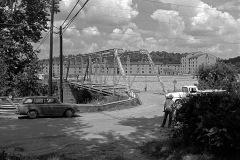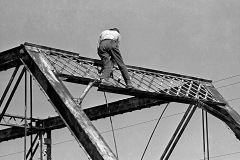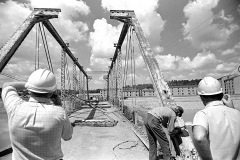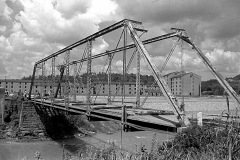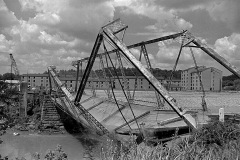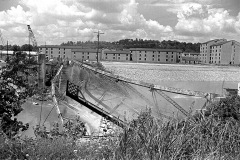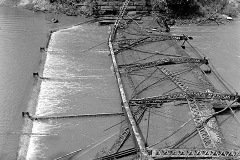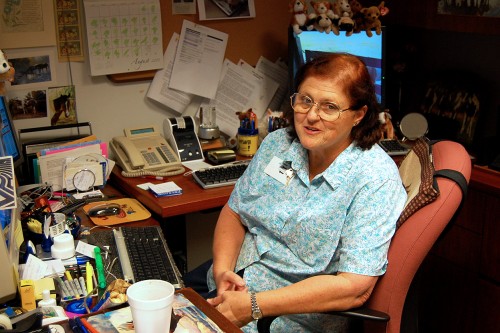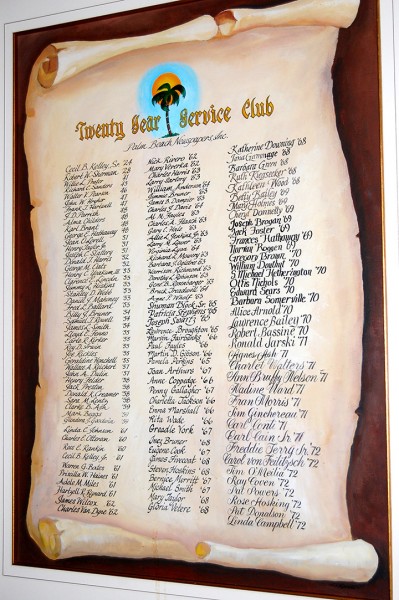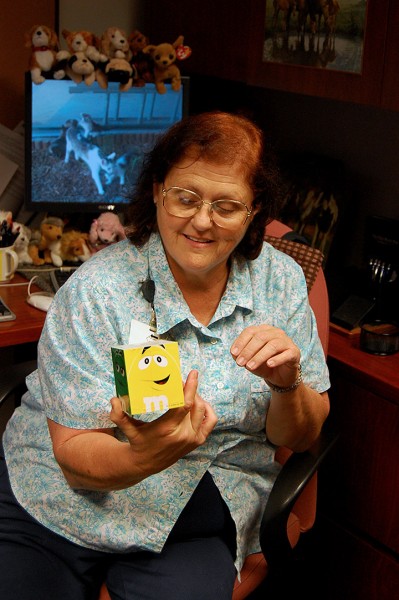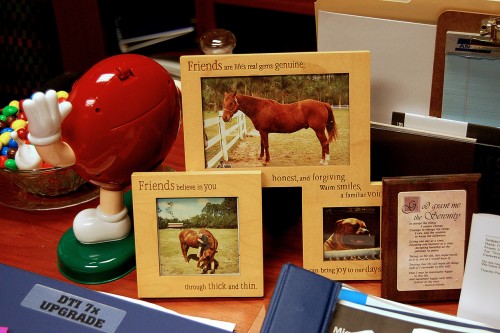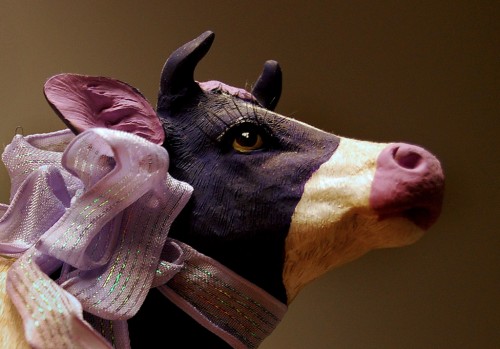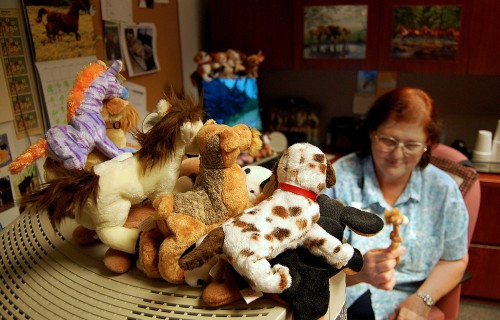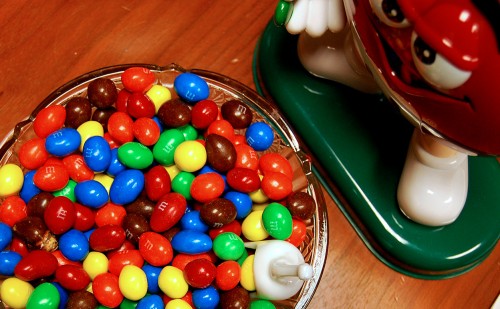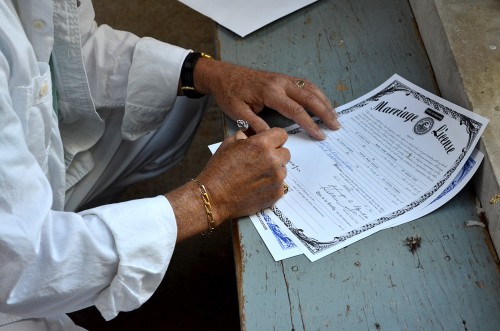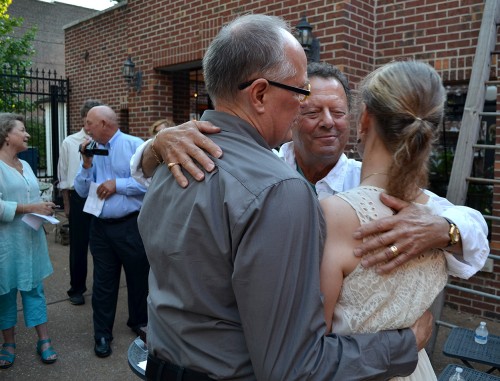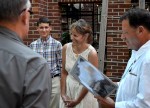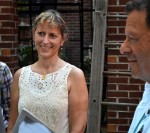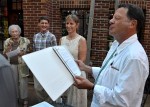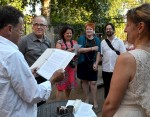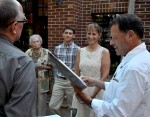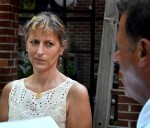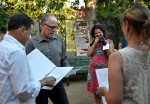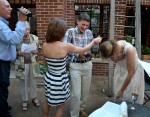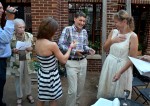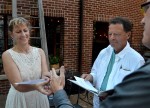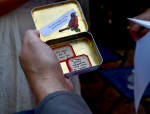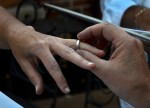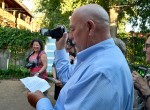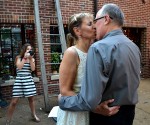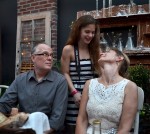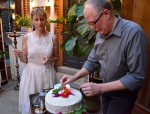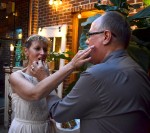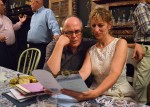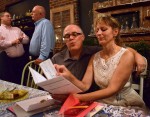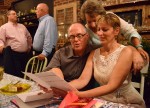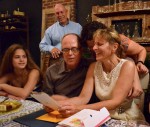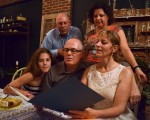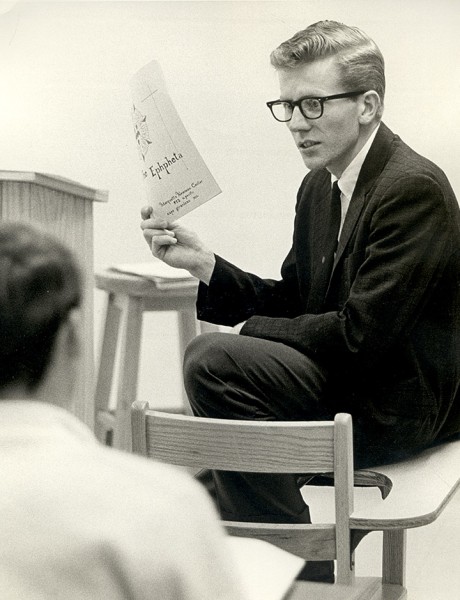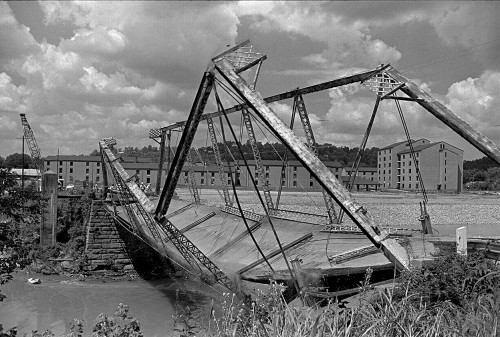 When I’m not thinking about Cape, I hang out on the You Know You’re from Athens, Ohio, If… Facebook page. Folks there post memories of things I shot working for The Athens Messenger in the late ’60s and early ’70s. Someone brought up the old Mill Street Bridge this week.
When I’m not thinking about Cape, I hang out on the You Know You’re from Athens, Ohio, If… Facebook page. Folks there post memories of things I shot working for The Athens Messenger in the late ’60s and early ’70s. Someone brought up the old Mill Street Bridge this week.
This is a photo I took of the bridge the day it was destroyed on August 25, 1970, because the river was being relocated as part of a flood control project.
The bridge went splash close to deadline, so I rushed this photo in, only to be told, “Oh, I have that dummied in as a vertical. It’s too late to change, so go back and find a vertical.”
I told the editor to let me have his seat. I laid out the front page to give myself a nice horizontal ride, rewrote a couple of headlines, and said, “This’ll work.” That’s when I appreciated all the pages Missourian editor John Blue let me lay out and the hundreds of headlines I had written.
The biggest lemon in the world
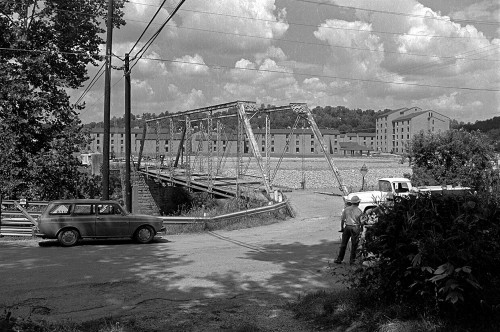 The vehicle on the left is my 1969 VW Squareback, the biggest lemon ever to be squeezed out of Germany. I loved the car, but it loved the repair shop more. I ended up selling it with the engine in a cardboard box.
The vehicle on the left is my 1969 VW Squareback, the biggest lemon ever to be squeezed out of Germany. I loved the car, but it loved the repair shop more. I ended up selling it with the engine in a cardboard box.
Wife Lila and I lived in a basement apartment a few blocks from the bridge and the river. The landlord showed us a big valve they’d have to close if the river got high; otherwise, we were going to find ourselves wading in sewage.
Hocking River gauge
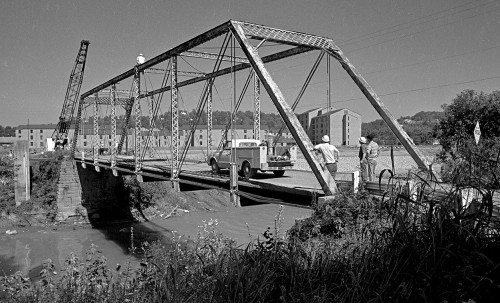 The little square concrete structure on the far left is the river gauge. It was mentioned in a 1916 Water-Supply Paper talking about the Hocking River Basin. It was located “at a single span highway bridge at Mill Street, about three-fourths mile from business district of Athens, Athens County.” The left bank, it said, overflows at gage (their spelling) height 17 feet and the water passes around the bridge. The study noted there were ruins of an old mill dam 300 feet downstream.
The little square concrete structure on the far left is the river gauge. It was mentioned in a 1916 Water-Supply Paper talking about the Hocking River Basin. It was located “at a single span highway bridge at Mill Street, about three-fourths mile from business district of Athens, Athens County.” The left bank, it said, overflows at gage (their spelling) height 17 feet and the water passes around the bridge. The study noted there were ruins of an old mill dam 300 feet downstream.
Bridge was cut apart
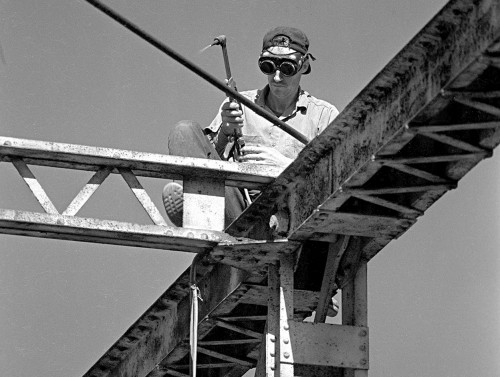 The horizontal members of the bridge were cut, leaving only the sides and bed behind. I don’t recall what actually brought the bridge down. The crane has been moved well back, and I don’t see the guy with the cutting torch in the final photos.
The horizontal members of the bridge were cut, leaving only the sides and bed behind. I don’t recall what actually brought the bridge down. The crane has been moved well back, and I don’t see the guy with the cutting torch in the final photos.
I’m pretty sure they didn’t use dynamite, like Dad did with a bridge over the Black River in Wayne county, Missouri. In his case, he had to drop the bridge straight down to keep it from damaging the new bridge next to it on one side and a bunch of phone lines on the other. The blast part went great, but cutting it apart like these guys are doing went not so well. You can see a video of it here.
Bridge demo gallery
Here’s a collection of photos of the bridge’s final moments. Click on any photo to make it larger, then use your arrow keys to move through the images.

